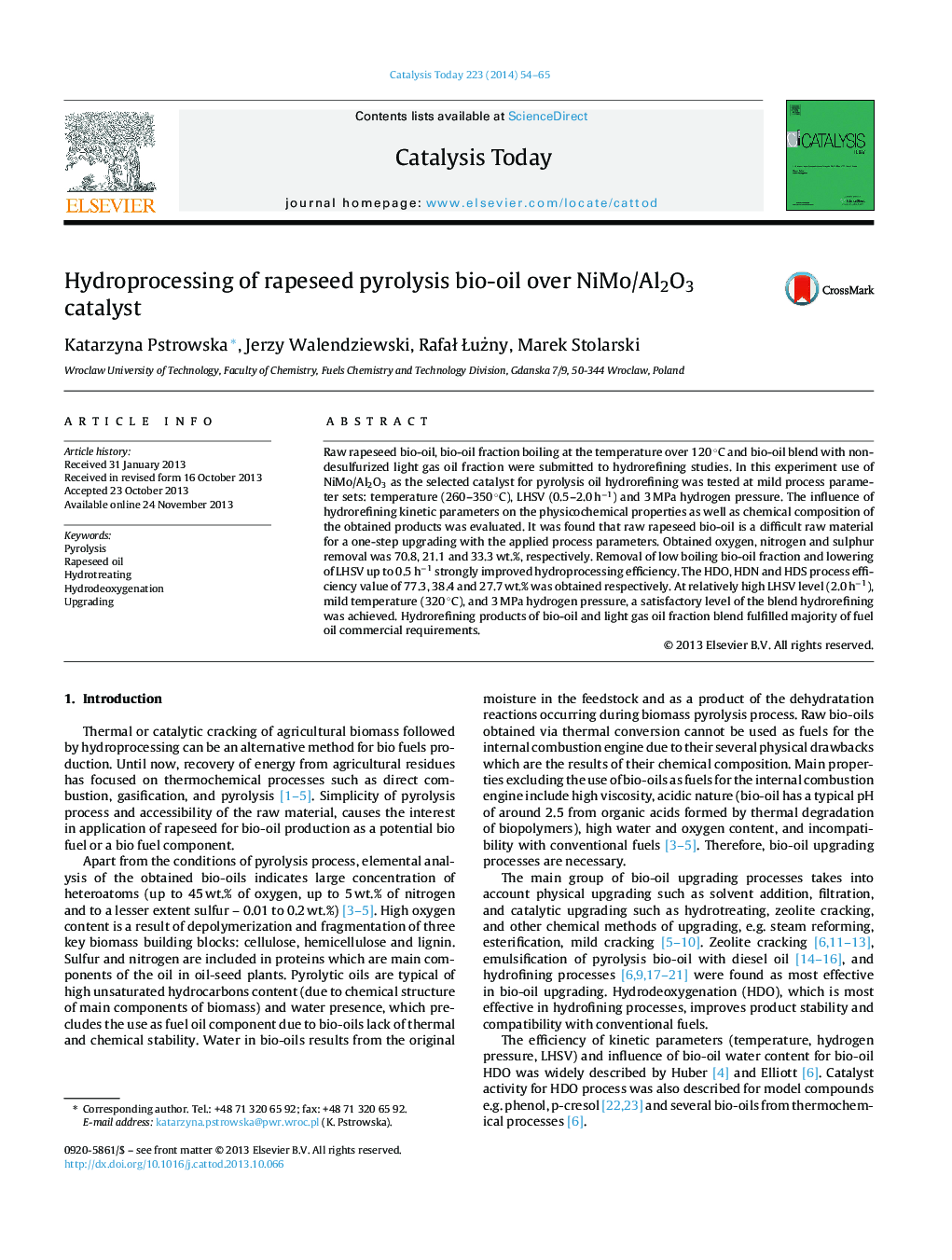| Article ID | Journal | Published Year | Pages | File Type |
|---|---|---|---|---|
| 54729 | Catalysis Today | 2014 | 12 Pages |
•Pyrolytic bio-oil was upgraded with mild hydrorefining over NiMo/Al2O3 catalyst.•Increase in raw materials water content strongly reduces HDO and HDN processes.•At mild hydrorefining parameters maximum HDO: 95% and HDN 51% levels were attained.•Bio-oil and light gas oil fraction blend upgrading leads to the fuel oil like product.
Raw rapeseed bio-oil, bio-oil fraction boiling at the temperature over 120 °C and bio-oil blend with non-desulfurized light gas oil fraction were submitted to hydrorefining studies. In this experiment use of NiMo/Al2O3 as the selected catalyst for pyrolysis oil hydrorefining was tested at mild process parameter sets: temperature (260–350 °C), LHSV (0.5–2.0 h−1) and 3 MPa hydrogen pressure. The influence of hydrorefining kinetic parameters on the physicochemical properties as well as chemical composition of the obtained products was evaluated. It was found that raw rapeseed bio-oil is a difficult raw material for a one-step upgrading with the applied process parameters. Obtained oxygen, nitrogen and sulphur removal was 70.8, 21.1 and 33.3 wt.%, respectively. Removal of low boiling bio-oil fraction and lowering of LHSV up to 0.5 h−1 strongly improved hydroprocessing efficiency. The HDO, HDN and HDS process efficiency value of 77.3, 38.4 and 27.7 wt.% was obtained respectively. At relatively high LHSV level (2.0 h−1), mild temperature (320 °C), and 3 MPa hydrogen pressure, a satisfactory level of the blend hydrorefining was achieved. Hydrorefining products of bio-oil and light gas oil fraction blend fulfilled majority of fuel oil commercial requirements.
Graphical abstractFigure optionsDownload full-size imageDownload high-quality image (211 K)Download as PowerPoint slide
